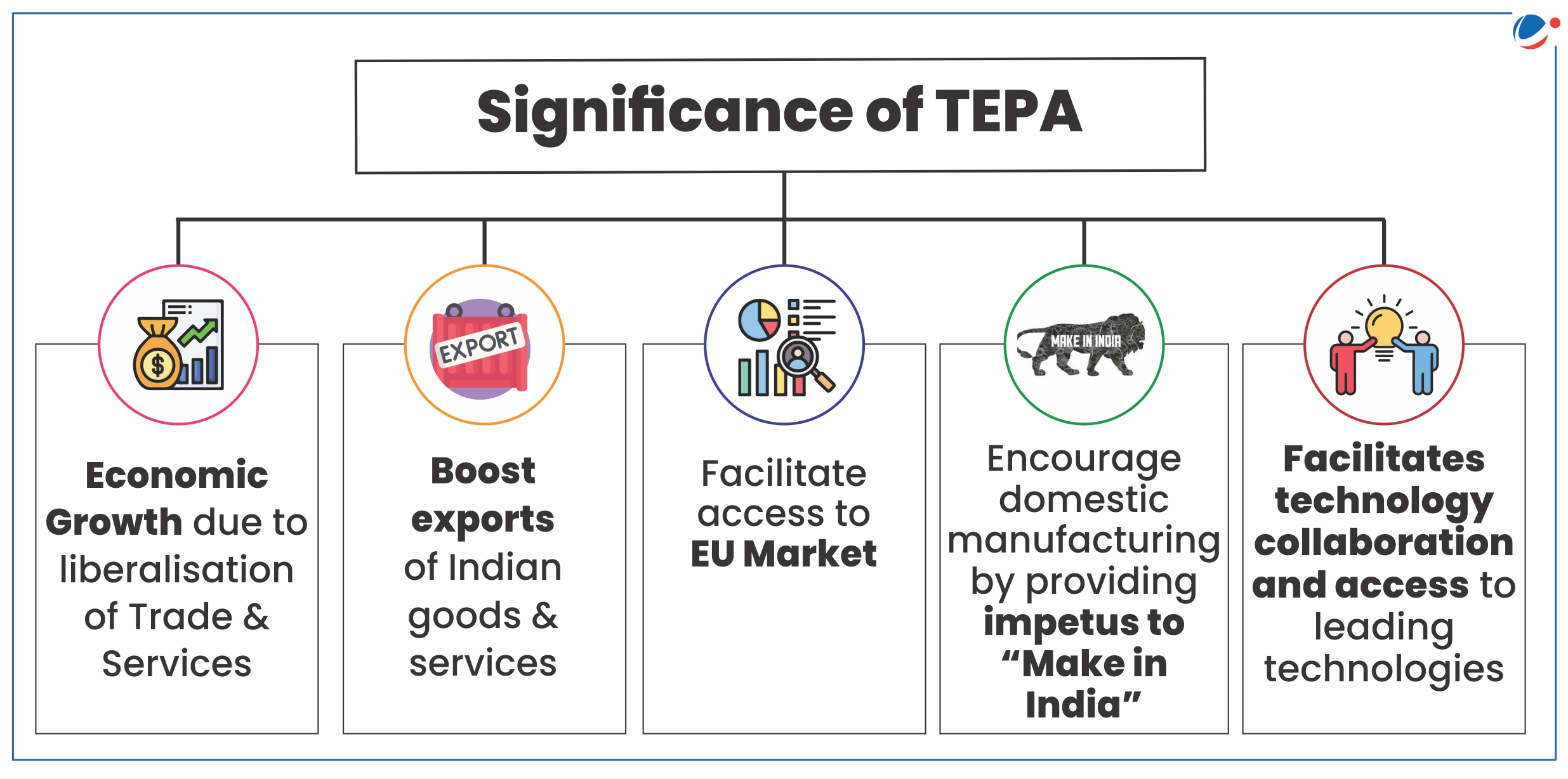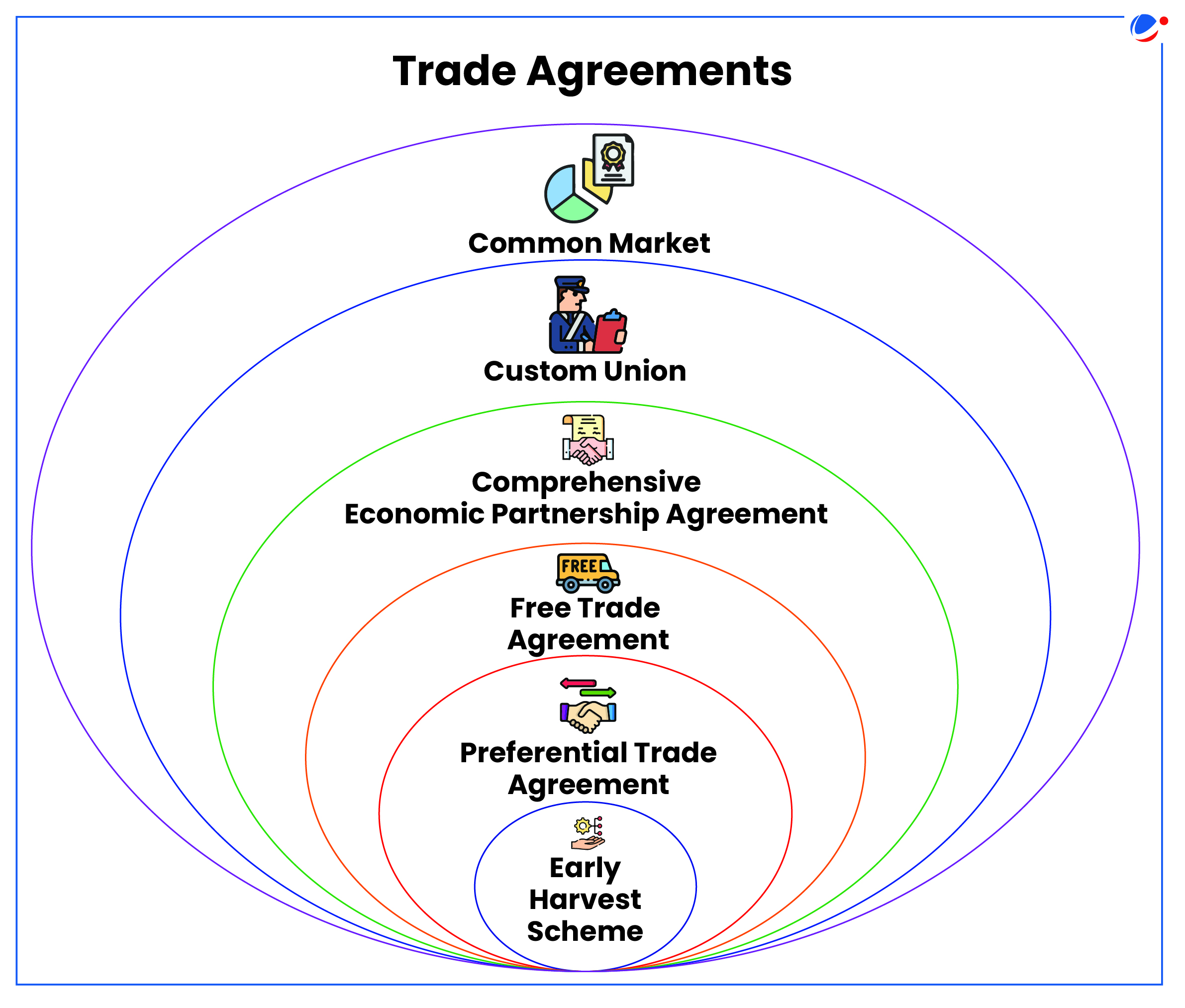Why in the news?
Recently, the India-European Free Trade Association (EFTA) signed a Trade and Economic Partnership Agreement (TEPA).
More on the news
- The agreement comprises 14 chapters with the main focus on market access related to goods, rules of origin, trade facilitation, trade remedies, sanitary and phytosanitary measures etc.
- For the first time, India has signed an FTA with Members of EFTA.
What is EFTA?
- About EFTA: The EFTA was established in 1960 through the Stockholm Convention, to promote closer economic cooperation and free trade in Europe.
- Members: Presently, its members are Switzerland, Norway, Iceland, and Liechtenstein, which are not part of the European Union.
- Austria, Denmark, United Kingdom, Portugal, Switzerland, Norway, and Sweden were initial members of EFTA.

India-EFTA Trade Relations
- Total Merchandise Trade: Exceeded US$ 22.33 billion between EFTA and India in 2023.
- India Imported: Natural pearls, precious stone metal etc. (81.7% of the trade).
- India Exported: Organic chemicals, Pearls, precious stones metals etc.
- Largest trading partner among EFTA: Switzerland is the largest trading partner followed by Norway.
- India has a trade deficit with Switzerland due to gold imports.
Key Highlights of TEPA
- Aim: EFTA aims to:
- Increase the stock of foreign direct investments by USD 100 billion in India in the next 15 years, and
- Facilitate the generation of 1 million direct employments in India.
- Legal Commitment: For the first ever time in the history of FTAs, a legal commitment is made about promoting target-oriented investment and the creation of jobs.
- Mutual Recognition Agreements: TEPA has provisions for Mutual Recognition Agreements in Professional Services like nursing, chartered accountants, architects etc.
- Tariff Reduction: EFTA is proposing to eliminate tariffs on 92.2 % of its tariff lines, covering 99.6 % of India's exports.
- Market Access: EFTA's market access offer covers 100% of non-agri products and tariff concession on Processed Agricultural Products (PAP).
- Intellectual Property Rights (IPR) Commitments: The IPR commitments within TEPA are aligned with TRIPS standards, indicating a high level of commitment to IPR protection.

Key issues regarding TEPA
- Data Exclusivity: Data exclusivity provisions, insisted by EFTA nations, would prevent domestic generic drug manufacturers from utilising data from preclinical tests and clinical trials.
- India has already rejected data exclusivity provisions.
- Exclusion from Trade Tariffs: India has excluded sensitive sectors like agriculture and dairy from significant tariff reductions, acting as bone of contention in EFTA countries.
- Sectors such as dairy, soya, coal and sensitive agricultural products are kept on the exclusion list and there will not be any duty concessions on these goods.
- Asymmetric Trade Benefits to EFTA: India agreed to significant tariff reductions on many goods over 10 years, while EFTA countries already have very low tariffs.
- This could lead to a wider trade gap with India importing more than it exports.
- Constraint with Investment Obligation: Under TEPA, India has the option to revoke tariff concessions granted to EFTA nations only after 18 years, if they fail to meet a FDI commitment.
Addressing these concerns and effective implementation of the agreement is paramount for the relationship to grow. To future-proof this relationship, additional areas of cooperation can also be outlined.
Potential areas of cooperation in future
- MSME Integration: Creating initiatives that allow small and medium-sized businesses (MSMEs) to be a part of trade flows and the global market.
- Business Outreach: Both sides can organise workshops and seminars to educate businesses on the agreement's specifics, tariff reductions, and new market opportunities.
- Innovation and Sustainability: Support cooperation in fields including clean technologies, renewable energy, and sustainable practices.
Types of Trade Agreements

|



